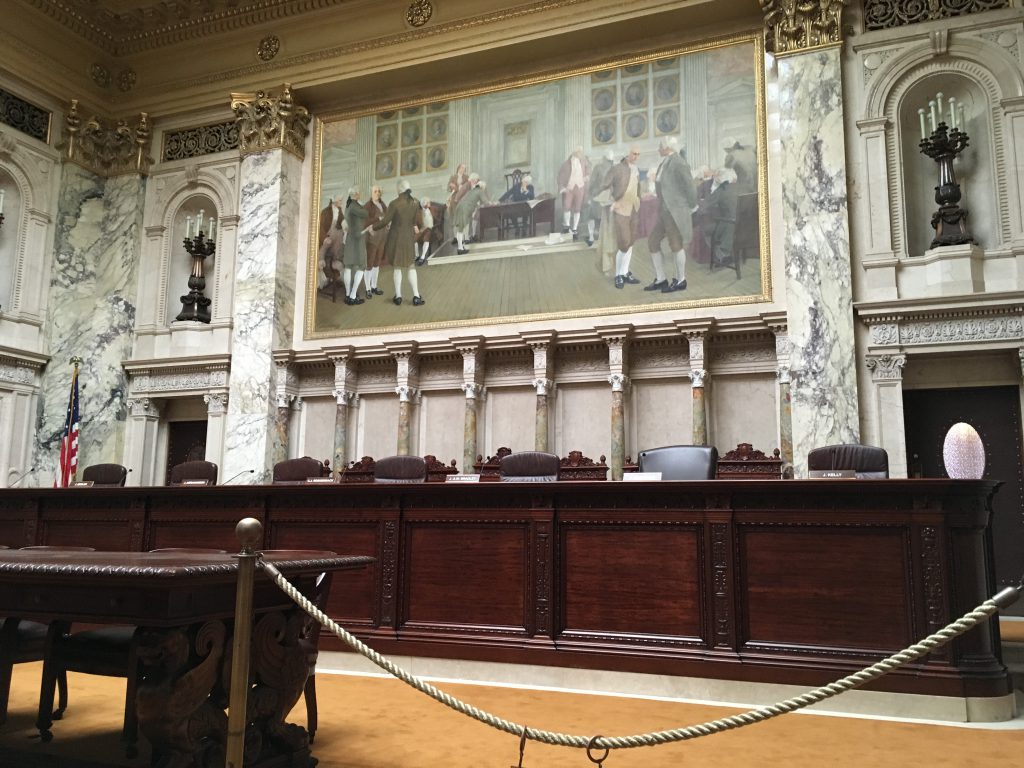Supreme Court Opposes Shackling Juveniles
Rule change would end shackling in state’s courts unless needed to prevent physical harm.
On Tuesday, the Wisconsin Supreme Court heard arguments for a potential rule change regarding the shackling of juveniles in the courtroom. While many other states have moved past a default practice of shackling juveniles, Wisconsin had not.
Although a formal decision will not be released until May, sources at the Supreme Court report that the petition to prohibit state courts from indiscriminately shackling juvenile defendants during court proceedings was overwhelmingly approved, and courts will be required instead to create policies to restrain children in court only when necessary.
The use of indiscriminate shackling of juveniles has been justified by the slightest possibility that a child could be disruptive or pose a danger in court. “I was never scared of my kids,” says Fredericks, adding that shackling only further stigmatized and traumatized her clients. “It just, to me, always seemed kind of unnecessary and frustrating that we were shackling these kids all the time.”
Over the course of the last decade a movement to change the practice has grown across the state. “In Wisconsin, I would say in 2014 was when we were really making a push,” says Fredericks, noting that judges brought up the issue in Dane County judges’ meetings. Initially, concerns about restraints were satisfied through a motion to have then removed which needed to be filed 48 hours in advance. Some judges questioned the need to file a motion just to request that a juvenile not be shackled. “Ultimately, once we started having kids unshackled in court, people saw the benefit of kids really just engaging more, sitting up straighter, making eye contact,” says Fredericks.
Comments on the rule change flowed in during December and January. In one comment, Era Laudermilk, chief of staff for the Cook County Public Defender’s Office in Illinois, spoke to the benefit of a similar rule change in her locale. Laudermilk stated that since the rule change, “incidents of violence in the courtrooms have not increased; rather there have probably been fewer, given the focus on de-escalation tactics instead of the use of shackles and force.”
Cecelia Klingele, an associate law professor at the University of Wisconsin Law School, emphasized that positive results of unshackling kids are borne out by research. “The negative effects of physical restraint upon children have been well documented by researchers,” she explained in her submitted comments, “but the profoundly detrimental — and potentially traumatizing — effects of shackling on children’s mental health should be apparent to anyone who cares for or works closely with youth. Indeed, physical restraint of the kind routinely applied in our courtrooms would be intolerable if indiscriminately used by teachers, medical providers, or caregivers.”
Tuesday’s Supreme Court hearing included the testimony of numerous judges, attorneys, juvenile justice and mental health advocates calling for an end to indiscriminate shackling. Milwaukee County Circuit Court Judge Laura Crivello, who joined in filing the petition, spoke about the importance of protecting a long-standing goal of courts to reduce recidivism and encourage rehabilitation. “We need youth to recognize their potential, and what they have to give to society,” said Crivello. “And wrapping a child in chains does not further that mission.” Crivello stressed that “judges need to change the perception of the youth in front of us, and we need to treat youth fairly. And fair is not a blanket policy that every child that comes in front of us is placed in shackles.”
In Hirsch’s own experience, “kids who are shackled are often so distracted by the shackles, or so shamed by the shackles, that they become less able to actually pay attention to the proceedings, and talk to their counsel and work with their lawyers.” Conversely, when the children are not indiscriminately shackled upon entering court, Hirsch has found that they tend to be more expressive and communicative. “They’re more able to take in what the judge and other people in the courtroom are telling them,” she explains. “So that’s important to juvenile court processes, that the judge could actually develop a rapport with the child.”
Rondini, a defense attorney and one of the petitioners for the rule change, says the Supreme Court rule change transcends politics. “Really the harm to our children that this creates, and the court system and the rehabilitative policies needs to be above and beyond politics.”
Wisconsin Supreme Court ends indiscriminate shackling of children in court was originally published by the Wisconsin Examiner.






















